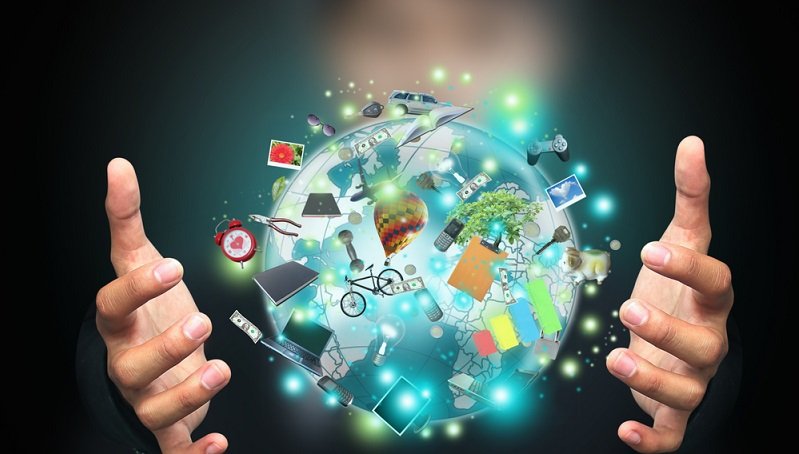The Edwin Hubble and telescope shows that technology and science are unit closely connected. The Technology uses science to resolve issues, and science uses technology to form new discoveries. However, technology and science have totally different goals. The goal of science is to answer queries and increase information. The goal of technology is to look out solutions to sensitive issues. Though they need totally different goals, science and technology work hand in hand, and every helps the opposite advance. Knowledge domain is employed to make new technologies like the area telescope. New technologies usually enable scientists to explore nature in new ways in which.
Technology support in Science
Science and technology facilitate one another advance. The Knowledge base is employed to make new technologies. New technologies usually enable scientists to explore nature in numerous ways that and build new discoveries. Samples of technologies that have helped science advance embody the telescope and magnifier.
They claim it supports improved student understanding of scientific ideas, which partaking within the method science improves students’ understanding of the character of science, teaches them a way to question things and formulate their own explanations, and improves students’ attitudes towards science. Technology will facilitate students add up of standards-based complicated topics and supply a window on science within the creating parenthetically science inquiry. To change students to assemble, organize, and show info, technology will mix image, modelling, and period of time information assortment with a full info.
Science contributes to technology with a minimum of six ways: (1) new information that is an immediate supply of concepts for brand spanking new technological possibilities; (2) supply of tools and techniques for additional economical engineering style and a cognitive content analysis of feasibleness of designs; (3) analysis instrumentation.
With the incorporation of technology into colleges, the most purpose is to vary, however; academics and students gather, access, analyze, gift and transmit Info. This could democratize info in school rooms also as facilitate differentiate instruction, notably for college students with special desires.
How Technology transforms Science
The astrophysicist telescope was placed into orbit around Earth within the Nineteen Nineties; however, scientists are victimization telescopes to form discoveries for many years. The primary telescope was fabricated within the early 1600s. The artificer was in all probability a Dutch trained worker named Hans Lippershey. He and his telescope should be pictured in Figure below. Lippershey used the knowledge base of the properties of sunshine and lenses to style his telescope.
The Role of Technology in the Educational Process.
Today, technologies want to improve and facilitate learning will be found all over. Deed alternative discourse factors to the facet – like unequal access to technological innovations and connected technologies across colleges and districts – we are able to solely say that we’ve embraced technology in education once it’s used for each teaching and learning. With the incorporation of technology into colleges, the most purpose is to alter however lecturers and students gather, access, analyze, gift and transmit data. This may democratize data in lecture rooms furthermore as facilitate to differentiate instruction, significantly for college kids with special desires.
How Technology can be used to Improve Learning
Technology allows students to help each other and work together across to better understand the material. In that sense, they can sometimes serve as the (supervised) teachers — and learning through instruction is known to be highly effective for mastering a topic and solving problems.
The following are ways that technology could be better leveraged to improve learning:
• With the widespread availability of student databases that are able to track individual progress, teachers are encouraged to identify learning objectives and differentiate instruction based on the needs of their students.
• Whenever teachers attempt to present instruction using technology, they should do so using a channel that is relevant to the objectives, the learning style, mode and the technology selected.
• When evaluating technology-based instruction, there needs to be appropriate evaluation techniques that are in line with the methods of instruction, objectives and the technology.
• Teachers can design follow-up activities when using technology to evaluate students’ learning and the role technology played in that process.
1) Kahoot
Kahoot is an educational tool that can be used on any device that has wifi (even smart phones). This tool can be used in a classroom to pit students against one another in a game setting. Or students can play by themselves to test their own knowledge. Either way, this resource appeals to the competitive spirit.
2) Discovery Education
If you are looking for free, standards-based digital content, look no further. This website has resources for students, parents, and educators. On this site, you’ll find games and get homework help. There are even resources for other subjects, though they Science tools are exceptional. For teachers (including home school parents), this website acts as a great way to connect with other educators.
3) Froguts
If you don’t want to cut open a frog on your dining room table, this software has incredible virtual dissection labs that brings science into your home (but not on your table). Though this resource is a paid subscription, the experience is well worth the cost. Topics integrate new NGSS standards (Next Generation Science Standards) and inquiry-based learning.
4) The Physics Classroom
Need a resource that’s active on twitter? Follow physics classroom and your students will love the real-life examples that bring Physics concepts to life. Their website features tutorials, interactive, concept builders, and teacher resources. You won’t want to miss this one-stop Physics shop.
5) PBS Learning Media
This website is multi subject, but can be sorted by grade level and subject. Resources include audio, video, images, PDFs, etc. Here’s one of our favorites for Chemistry—a lesson on ionic bonding.
6) Cells Alive
If cells, microbes, and the immune system are your thing, this website has games, puzzles, and models to help students interact with science. This resource is great for teachers who are looking for worksheets or quizzes to use in class.
7) Periodic Table of Elements
This online resource puts everything you ever need to know about the elements in one place. It will link every element to its Wikipedia page, give the electron count, state the properties of each element, and more. It’s got everything you will ever need if you’re cramming for a Chemistry Periodic Table quiz.
8) Live Science
For “the science geek in everyone,” Live Science is perfect for the student who wants to browse. The website covers the latest scientific news, and includes other topics such as health, technology, earth, space, etc. A compelling section of the website is “Strange News,” which features such headlines as “People Are Freaking Out Over This Monster Fungus That Smells Like Rotting Crab” or “’Yeti’ Hair? Nothing So Abominable, Scientists Find.” For those with an inquisitive mind, this site is a must.
9) Science Buddies
This resource rounds out the top 10 with a focus on Careers in Science. Though there are other resources such as science fair ideas, parent/student/teacher tools, and “ask an expert,” it’s the career section that is particularly engaging for students. Careers are labelled as “in demand” for the job market, and students can explore key facts and education requirements for each area. This is a crucial resource for College and Career Readiness standards.
How Technology supports NASA’s life
NASA makes positive that these various applications, or spin offs, should be created offered to the general public. The advantage should be creating an impression worldwide in higher health and medication, transportation, public safety, client product, engineering, environmental and agricultural resources, and industrial activity.
Top Five Technologies Needed for a Spacecraft to Survive Deep Space
• Systems to Live and Breathe.
• Proper Propulsion.
• The Ability to Hold Off the Heat.
• Radiation Protection.
Constant Communication and Navigation
How does space exploration benefit technology?
Space exploration so supports innovation and economic prosperity by stimulating advances in science and technology, yet as motivating the worldwide scientific and technological force, so enlarging the sphere of human economic activity.
What is a space technology called?
Space technology is technology developed by area science to be used in aeronautics, for functions like space faring or area exploration. Area technology includes artificial satellite, satellites, area stations, and support infrastructure instrumentality, and procedures and area warfare.
Who invented space technology?
Soviets
On Oct. 4, 1957, the Soviets launched the first artificial satellite, Sputnik 1, into space. Four years later on April 12, 1961, Russian Lt. Yuri Gagarin became the first human to orbit Earth in Vostok 1.
What was the first human technology to enter space?
Bumper-WAC
In 1949, the “Bumper-WAC” became the first human-made object to enter space as it climbed to an altitude of 393 kilometers (244 miles). The rocket consisted of a JPL WAC Corporal missile sitting atop a German-made V-2 rocket.



